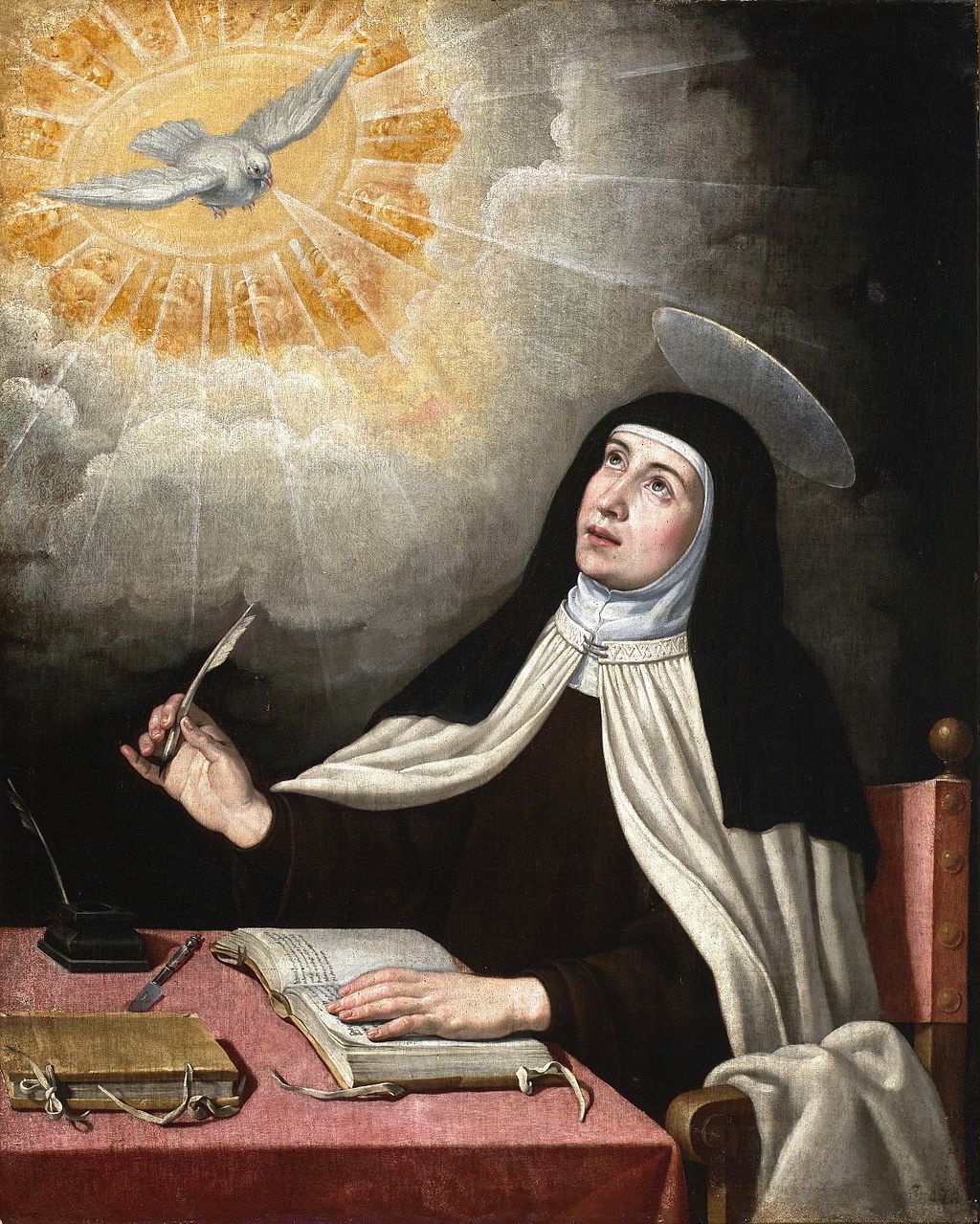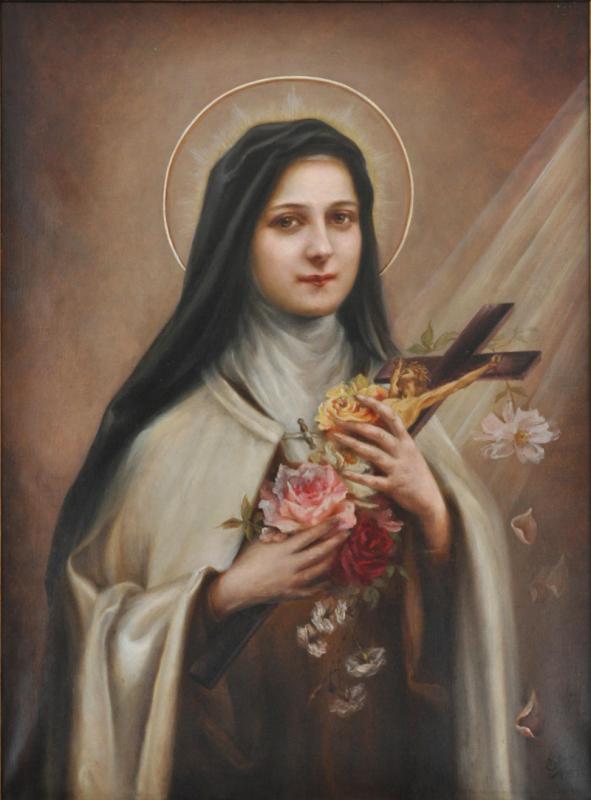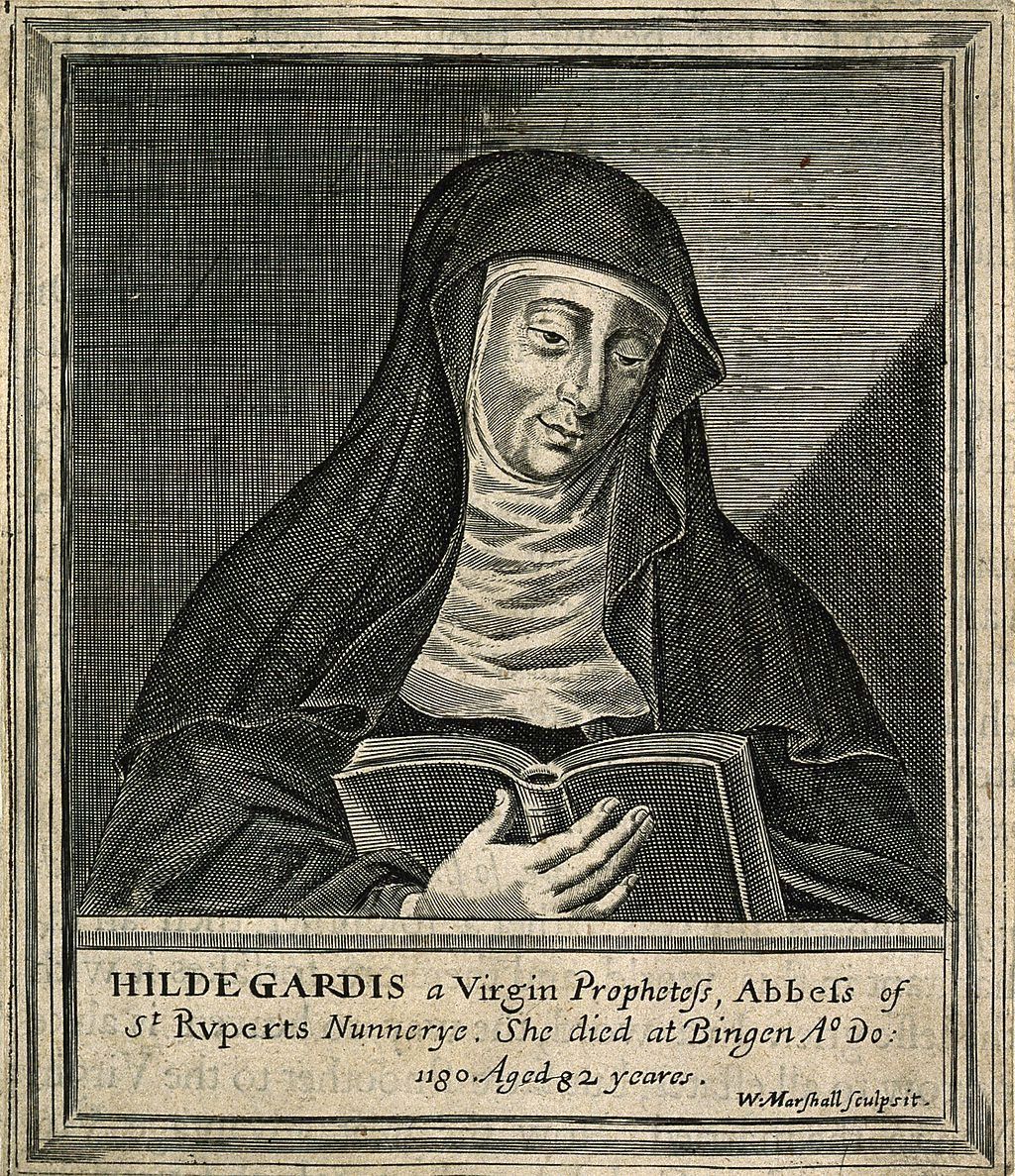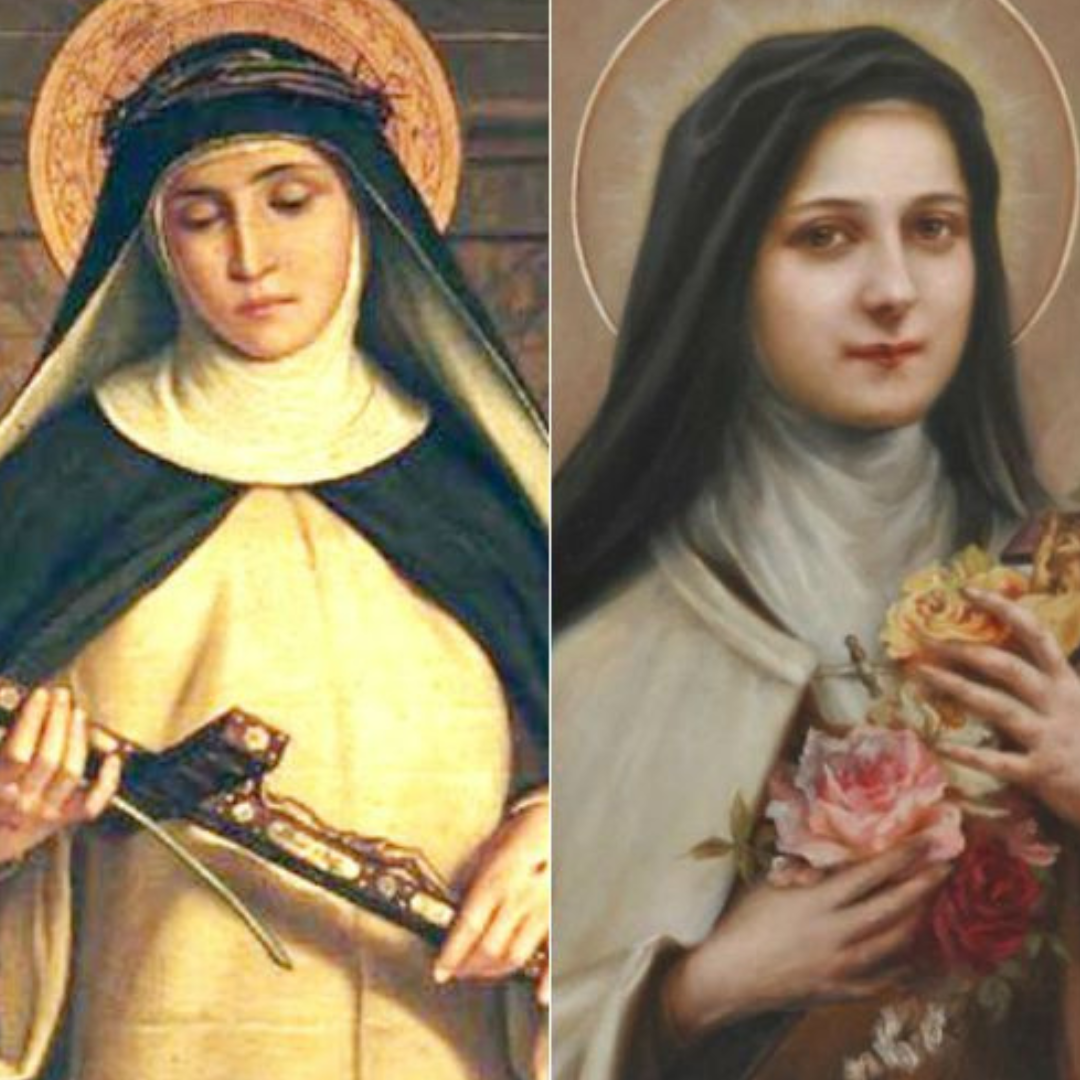Many women throughout salvation history have represented signs of holiness, love, and service to God.
But only four of them earned the title “Doctor of the Church.”
The Church gives this title to those who “have advanced the Church’s knowledge of our faith” “through their research, study, and writing.
There are only four female Doctors of the Church: Saint Teresa of Avila, Saint Catherine of Siena, Saint Thérèse of Lisieux, and Saint Hildegard of Bingen.
Pope Paul VI declared Saint Teresa of Avila and Saint Catherine of Siena the first female Doctors of the Church in 1970.
Saint John Paul II declared Saint Therese of Lisieux a Doctor of the Church in 1997, and Pope Benedict XVI declared Saint Hildegard of Bingen a Doctor in 2012.
Saint Teresa of Avila

Teresa of Avila was born in Avila, Spain in 1515. This Carmelite nun, writer, and mystic was the great reformer of the Carmelite Order.
Her official title is the “Doctor of Prayer,” or “Doctor Orationis.”
During Pope Paul VI’s 1970 homily declaring Saint Teresa as a Doctor of the Church, he said:
"This prerogative of Saint Teresa, that of being mother and teacher of people who dedicate themselves to the spiritual life, had already been accepted, we can say, by unanimous consensus: mother of charming simplicity and teacher of admirable depth. The support of the tradition of Saints, theologians, believers and scholars of the matter had already been given to him. We now confirm this, ensuring that she, adorned with this title of teacher, can have a more authorized mission to fulfill in her religious Family, in the praying Church and in the world, with her perennial and present message: the message of prayer."
Saint Teresa of Avila is the patron saint of bodily illnesses and headaches. She died in Avila in 1582. Her feast day is Oct. 15.
"Christ has no body now, but yours. No hands, no feet on earth, but yours. Yours are the eyes through which Christ looks compassion into the world. Yours are the feet with which Christ walks to do good. Yours are the hands with which Christ blesses the world." - Saint Teresa of Avila
Saint Catherine of Siena

Saint Catherine of Siena was born in 1347 in Italy and lived until 1380. She was a Dominican nun, theologian, philosopher, and mystic.
She firmly defended the Church and the pope, especially in a period when many conflicts arose against him.
In his homily declaring her a Doctor, Pope Paul VI said that she addressed “cardinals and many Bishops and priests, she…did not spare strong reproaches, but always in all humility and respect for their dignity as ministers of the Blood of Christ.”
He added, “How then can we not remember the intense work carried out by the Saint for the reform of the Church?
“It is mainly to the sacred shepherds that she addresses her exhortations, disgusted with holy indignation by the ignorance of not a few of them, quivering for their silence, while the flock entrusted to them was dispersed and ruined.”
He then referenced Saint Catherine of Siena, who said, “The world is rotten because of silence.”
What an example of strength and bravery!
Saint Catherine is the co-patroness of Italy, Rome, and Europe. Her feast day is April 29.
“Proclaim the truth and do not be silent through fear” - Saint Catherine of Siena
Saint Thérèse of the Child Jesus

Saint Thérèse of Lisieux lived from 1873-1897 in France. She entered the Carmelite cloister as a postulant at age 15. She greatly desired to be a missionary.
When declaring her a Doctor of the Church in 1997, Saint John Paul II said:
“Jesus himself showed her how she could live this [missionary] vocation. By fully practicing the commandment of love, she would immerse herself in the very heart of the Church’s mission, supporting those who proclaim the Gospel with the mysterious power of prayer and communion. Thus she achieved what the Second Vatican Council emphasized in teaching that the Church is missionary by nature (cf. Ad gentes, n. 2). Not only those who choose the missionary life, but all the baptized are in some way sent ad gentes. This is why I chose this missionary Sunday to proclaim Saint Thérèse of the Child Jesus and the Holy Face a doctor of the universal Church: a woman, a young person, a contemplative.”
Saint Thérèse is the patron saint of missionaries. She died from tuberculosis at age 24. Her feast day is Oct. 1.
For me, prayer is a surge of the heart; it is a simple look turned toward heaven, it is a cry of recognition and of love, embracing both trial and joy. – Saint Thérèse of Lisieux
Saint Hildegard of Bingen

Saint Hildegard of Bingen was born in Germany and lived between 1098 and 1179.
Saint Hildegard was a Benedictine nun, mystic, and theologian. She also worked in medicine and natural sciences. Saint John Paul II described her as a “light for her people and her time."
When Pope Benedict XVI declared Saint Hildegard a Doctor of the Church, he said in his Apostolic Letter:
“Hildegard has great significance for today’s world and an extraordinary importance for women. In Hildegard are expressed the most noble values of womanhood: hence the presence of women in the Church and in society is also illumined by her presence, both from the perspective of scientific research and that of pastoral activity. Her ability to speak to those who were far from the faith and from the Church make Hildegard a credible witness of the new evangelization.”
Saint Hildegard’s feast day is Sept. 17.
“I am the fiery life of the essence of God; I am the flame above the beauty in the fields; I shine in the waters; I burn in the sun, the moon, and the stars. And with the airy wind, I quicken all things vitally by an unseen, all-sustaining life.” - Saint Hildegard of Bingen



